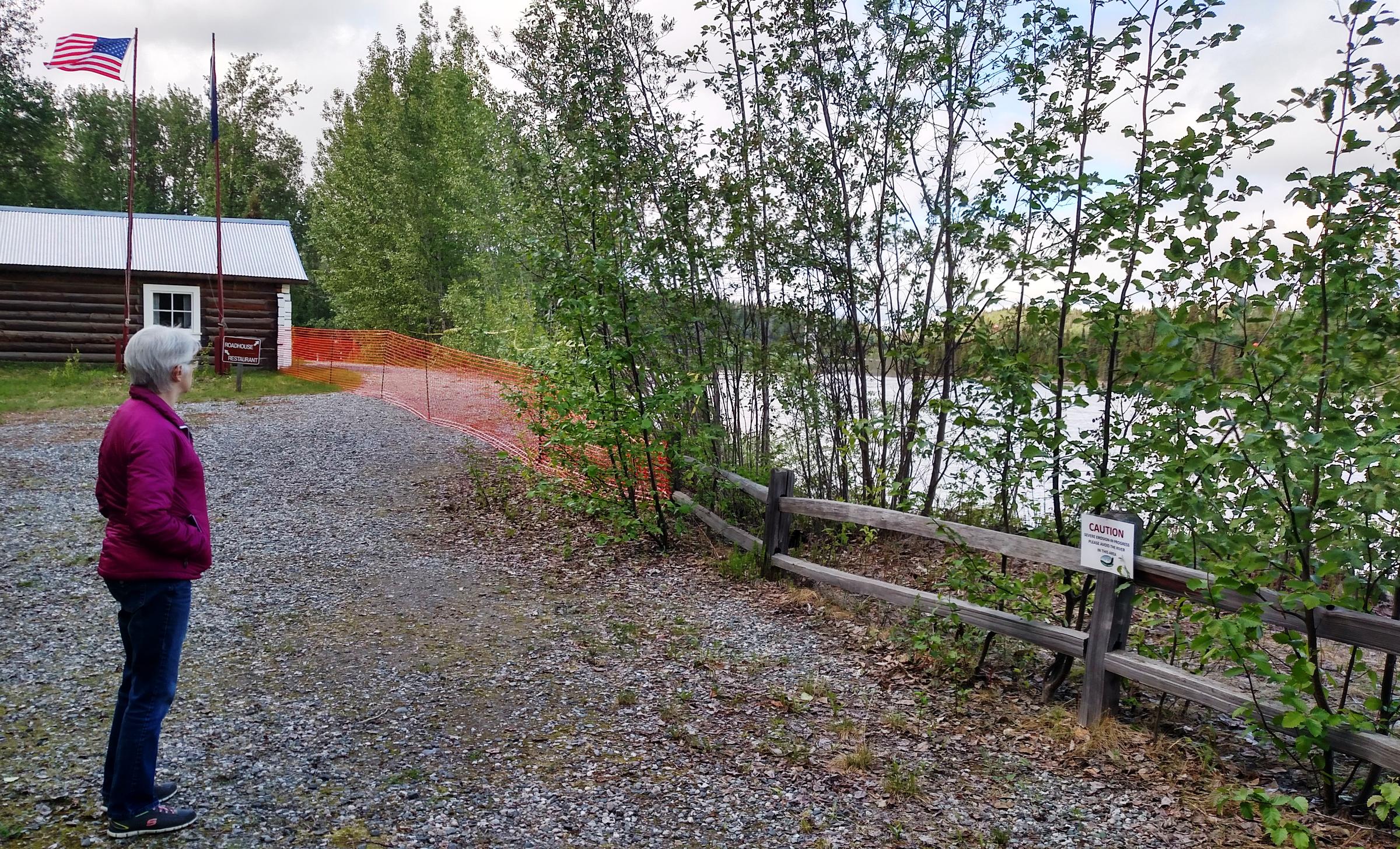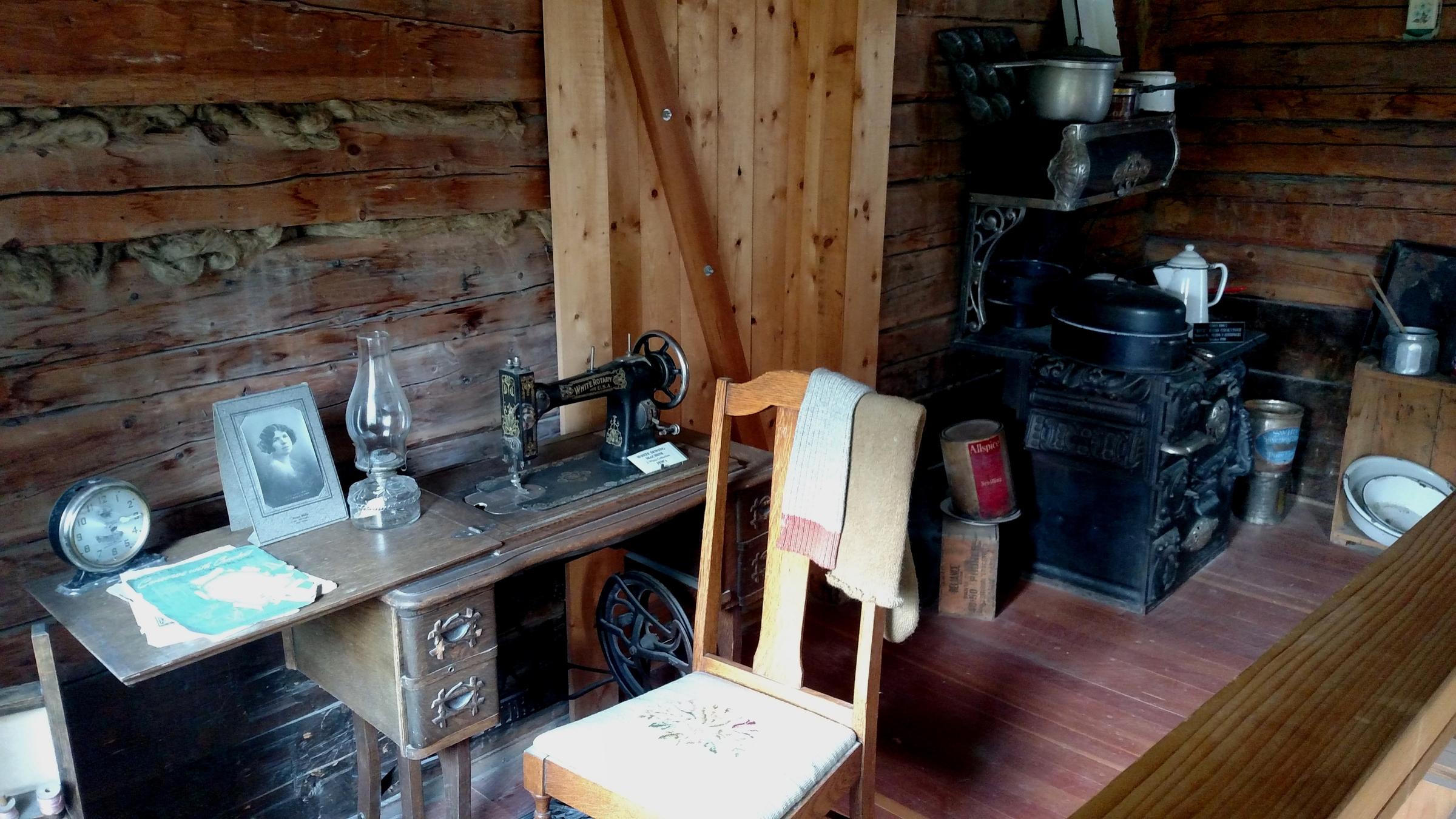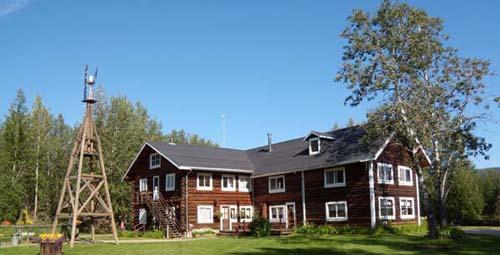Alaska State Parks officials have closed a section of trail in Big Delta State Historical Park near Delta Junction, because the Tanana River been cutting sharply into its southern bank where the trail is located. The extreme erosion now threatens a couple of historical cabins within the park. State and local officials are working on a plan to shore up the bank – and to come up with a way to pay for it.

Delta Historical Society board vice president Susie Sandy says the erosion also threatens important attractions in Big Delta State Historical Park.
“We are very concerned,” Sandy said. “That’s a big part of our community, that site down there. And a big part of the history of Alaska.”

The park includes Rika’s Roadhouse, where travelers along the old Fairbanks-to-Valdez Trail could rest and, before a bridge was built, catch a ferry to get to the other side. The park also includes a couple of fully restored cabins used more than a century ago by signal soldiers with the Washington-Alaska Military Cable and Telegraph System, or WAMCATS.
And one of the cabins sits maybe 20 feet from a dropoff formed by the Tanana chewing into the southern bank.
“It would be just a travesty if those cabins go into the river,” Sandy said.
Ludwig says after he learned about the problem a few weeks ago, during breakup, he brought in engineers to evaluate the situation. He says they’re working on a plan to shore up the bank employing the same technique used about 10 years ago on a stretch of the bank near Rika’s Roadhouse that the Tanana was eroding away.
“To really tie the whole bank (together) along there and protect the entire park, we need to do another about 450 feet of bank stabilization,” Ludwig said.

(Photo courtesy of Alaska Department of Natural Resources)
Ludwig says the engineers estimated the project would cost about $700,000 – which he acknowledged, considering the state’s fiscal crisis, might require requesting help from the federal government or other source.
“The state’s broke, so it’s hard to come up with capital money at this time,” Ludwig said.
Sandy says the historical society also doesn’t have money like that, but would be willing to spearhead an effort to fund-raise it.
“The historical society is willing to step up and do whatever’s necessary, in terms of writing letters and contacting people,” she said.
Sandy says her other and perhaps bigger concern is time. She says the work should be done soon – not five years from now, which is how long Ludwig says it took to get funding for the first bank-stabilization project 10 years ago.
She says if the river gets too close to the cabins, she’d support jacking them up and moving them away from the river. Ludwig says he’d go along with that, but he’d prefer to keep them in their present location, to protect their historical authenticity.
Tim Ellis is a reporter at KUAC in Fairbanks.




